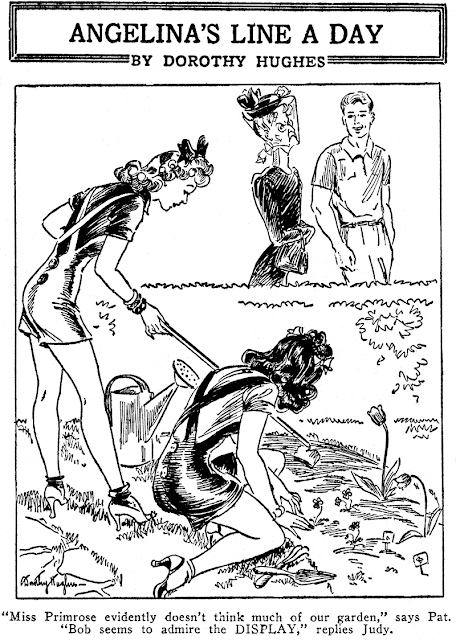Well, this doesn’t happen too often, thankfully. I’m running an Obscurity of the Day today in order to tell you that it does not qualify to be in my book (feature #1955) and should never have been included there.
In the early 1930s NEA’s fabulous woman cartoonist, Ethel Hays, must have been feeling the need to cut back on her duties. Coming into that decade she was responsible for the daily Flapper Fanny panel, the 3-4 times per week Ethel panel, and she was also more and more often on tap to provide Sunday magazine covers. Something had to give. In 1930 she handed off the Flapper Fanny panel to a new artist, and then in that same year she cut her Ethel panels back to 1-2 times per week.
Gladys Parker came to the rescue in both cases; first she took over Flapper Fanny; then she took up the slack on the women’s pages when Ethel was reduced in frequency. In the latter case, she created a feature called Femininities which, as you can see in the samples above, is not in any way a comic panel. It is instead more in the nature of a graphic showing fashion trends. There’s nothing wrong with that, and Gladys Parker’s delightful art is always worth a long and joyful gander, but it ain’t comics.
Apparently when I was working through the NEA archives at OSU at beakneck speed, I saw the title, I saw the byline, and into my index it went withlout a second thought. So mea culpa, he said, in the internet-based confessional.
As long as we’re here, I’ll throw out some data: the feature began on April 10 1930 and generally ran 2-3 times per week.When Ethel Hays ended her Ethel panel in 1934, Femininities ran a bit more often after that, and ended sometime in 1935. I say sometime, because the feature often ran untitled and I lost track of it in the NEA archives during that period. I’ve had no better luck retracing those steps in digital newspapers, as they seem unable to find Hays’ feature mst of the time.
Alex Jay will be weighing in on Wednesday with an Ink-Slinger Profile about Gladys Hays, and if you find yourself a fan of her impressive work, I highly recommend Trina Robbins’ book Gladys Parker: A Life in Comics, A Passion for Fashion.














This strip also appeared in the Uniontown (Penna.) Morning Herald.
Thanks for the info Mark. Just goes to show that there's an editor out there for every feature I guess. Any words of wisdom about Hearst's Public Press syndicate?
Thanks, Allan